Gray exterior paint carries a remarkable range—able to swing from coastal lightness to near-black drama—yet consistently delivers calm sophistication and resale-friendly curb appeal. 2025 color reports spotlight warm greiges such as Agreeable Gray, deep charcoals like Graphite, and nature-tinted newcomers such as Gray Heron, while designers double down on material pairings that let each tone sing: cedar soffits against mid-tone siding, stone veneer beneath pewter walls, and metal roofs crowning minimalist boxes. Lighting strategy and landscape planning complete the picture, ensuring the chosen gray reads rich by day and welcoming by night. The twenty ideas that follow translate those expert insights into actionable, 100- to 120-word blueprints you can hand straight to a painter or architect.
1. Soft Repose Gray Exterior for Subtle Sophistication
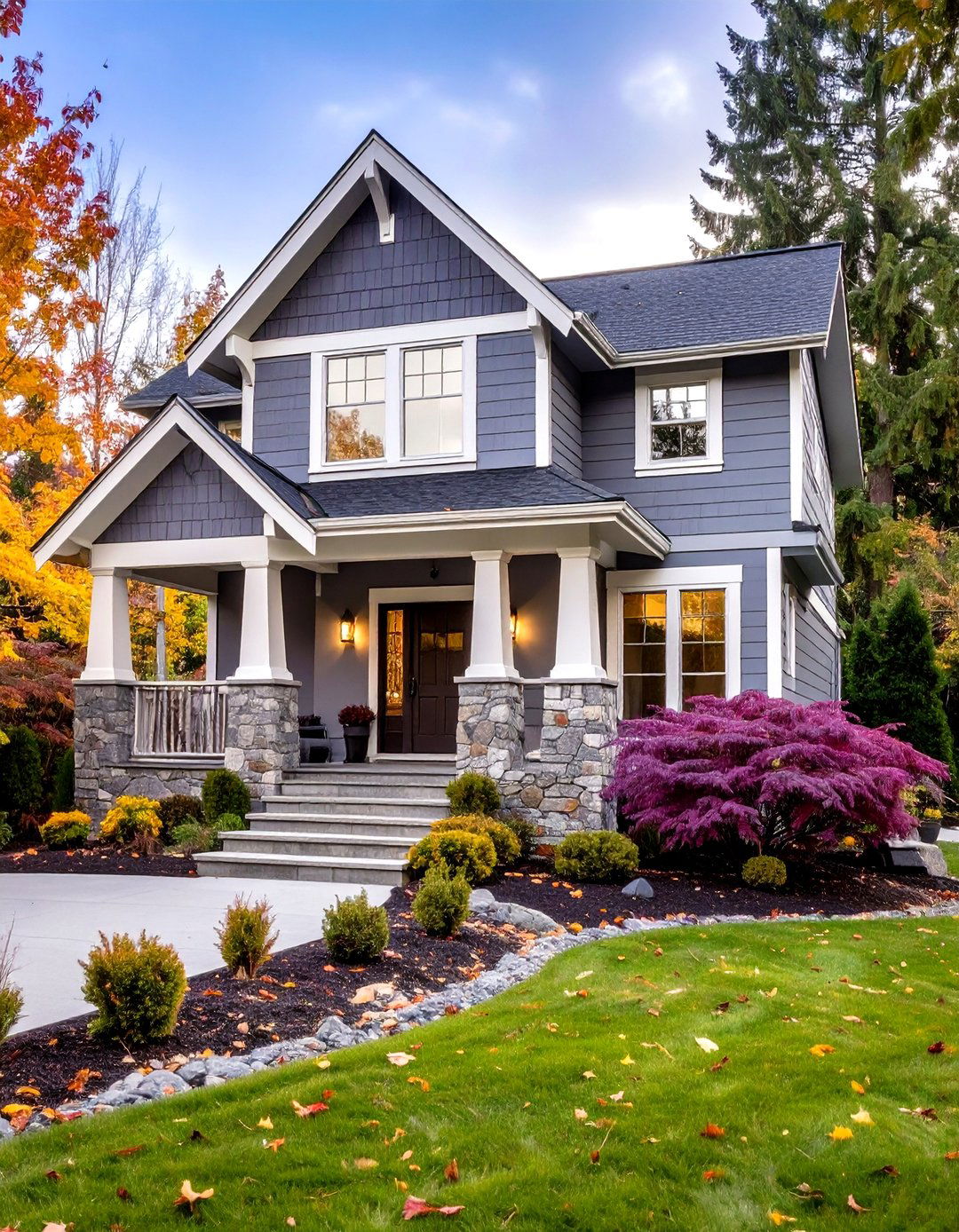
A whisper-light coat of Sherwin-Williams Repose Gray instantly lends a soft, spa-like aura to clapboard or stucco, yet keeps enough warm pigment to avoid the flat chill that some grays develop outdoors. This gray exterior shade sits in the sweet spot between cool silver and greige, letting white trim glow without looking stark and making stone foundations feel intentionally blended. Designers recommend pairing it with a matte finish on broad walls and a low-lustre sheen on trim to create quiet, readable contrast even under bright sunlight. Test patches on north- and south-facing walls first, because subtle violet undertones surface in deep shade and shift toward taupe at noon.
2. Warm Greige Gray Exterior for Welcoming Facades
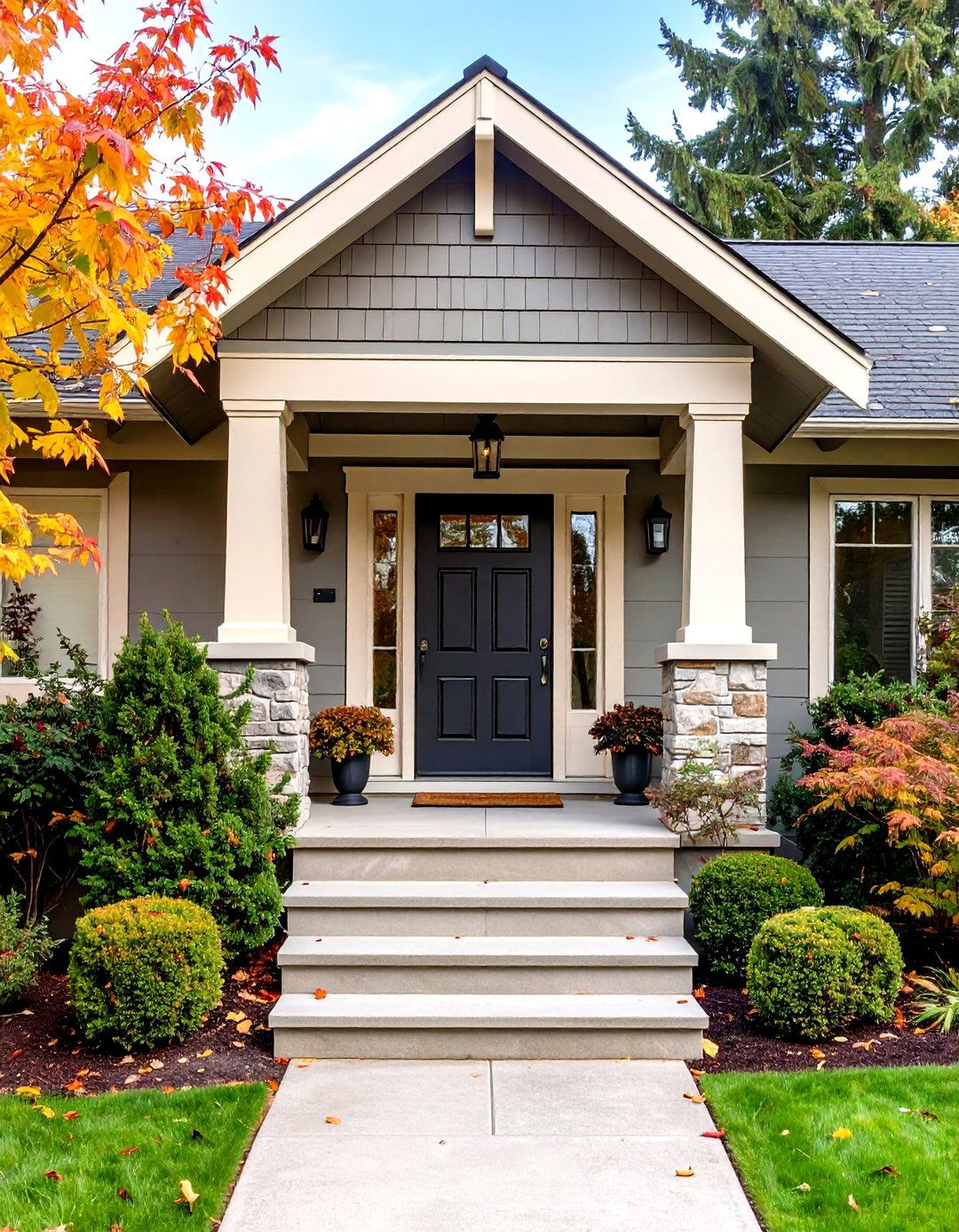
Unlike cooler blue-based grays, crowd-pleasing greige tones such as Sherwin-Williams Agreeable Gray and Benjamin Moore Revere Pewter wrap a home in a buffed-stone warmth that complements both red brick and aged cedar. Because each pigment straddles gray and beige, the exterior reads differently throughout the day—softly beige at sunrise, grounded gray at dusk—so neighbors see dimension instead of flatness. Color consultants suggest amplifying that nuance by choosing creamy off-white soffits and a muted black front door rather than pure white and jet black, which can look harsh beside warm undertones. Remember to paint sample boards and watch them against your landscaping; autumn leaves, clay soil, or lush grass can all push a greige façade slightly cooler or warmer.
3. Deep Kendall Charcoal Gray Exterior for Modern Drama

By simply coating siding in Benjamin Moore Kendall Charcoal, you signal contemporary confidence without resorting to jet black. This deep gray exterior has a 12 LRV, meaning it soaks up glare and allows large windows or polished hardware to sparkle like jewelry. Architects often soften its intensity by specifying cedar soffits, copper accents, or brushed stainless railings, so the façade feels layered rather than monolithic. When working with a dark base, use high-build primer and two thin finishing coats; the extra film thickness helps darker pigments resist UV fade and chalking. Install warm LED uplights along the foundation to accentuate shadow-play after dusk.
4. Crisp Gray Exterior with Black Trim Highlights

Looking for high-contrast elegance? Start by painting the main body a medium architectural gray such as Sherwin-Williams Cityscape, then frame windows and rooflines with deep black trim for razor-sharp outlines. The combination channels Scandinavian minimalism yet remains practical: darker trim visually recedes, letting the gray exterior walls appear broader and cleaner. To prevent a striped look, painters suggest wrapping the black onto soffits and gutters, so the dark line reads as a deliberate border rather than a thin picture frame. Finish the palette with brushed-nickel house numbers and a natural stone walkway; the cool metal and textured pavers echo tones already in the paint scheme, giving the façade a cohesive storyline.
5. Misty Coastal Gray Exterior for Beachy Vibes
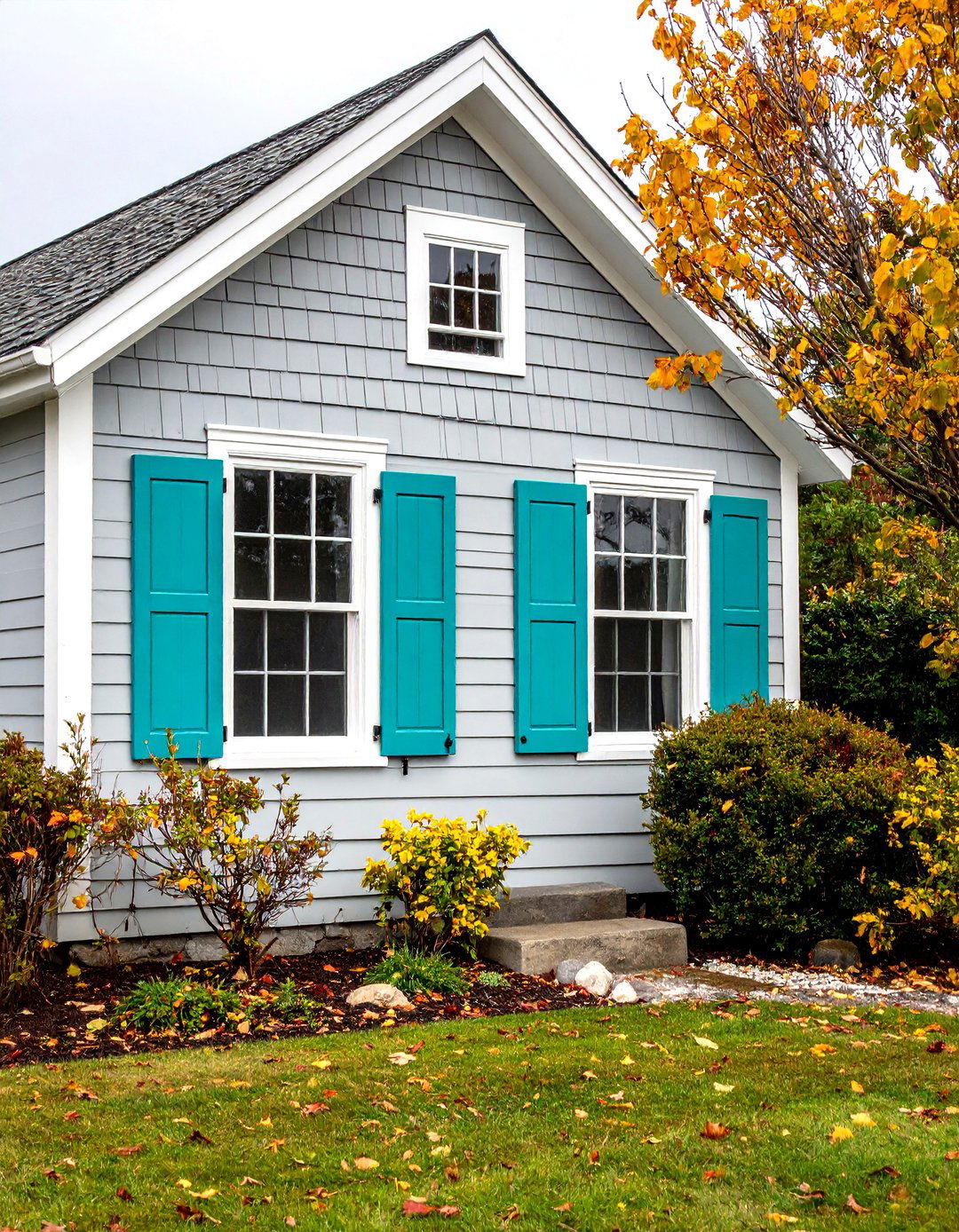
For homes near the sea—or anyone craving that breezy feeling—choose a misty, blue-leaning gray such as Misty or Morning Fog and partner it with crisp white trim for a sail-cloth freshness. Designers say these shades mimic weathered boardwalk planks and driftwood, so they fit naturally alongside dune grasses, shingle roofs, and stainless boat hardware. If you want a dash of color, swap the standard black shutters for watery teal or seaglass green; against the restrained gray exterior, those accents read playful rather than loud. Seal the scheme with a fade-resistant exterior polyurethane on doors and railings—the salty air that flatters muted gray pigments is equally tough on unprotected wood.
6. Gray Exterior with Natural Wood Accent Harmony
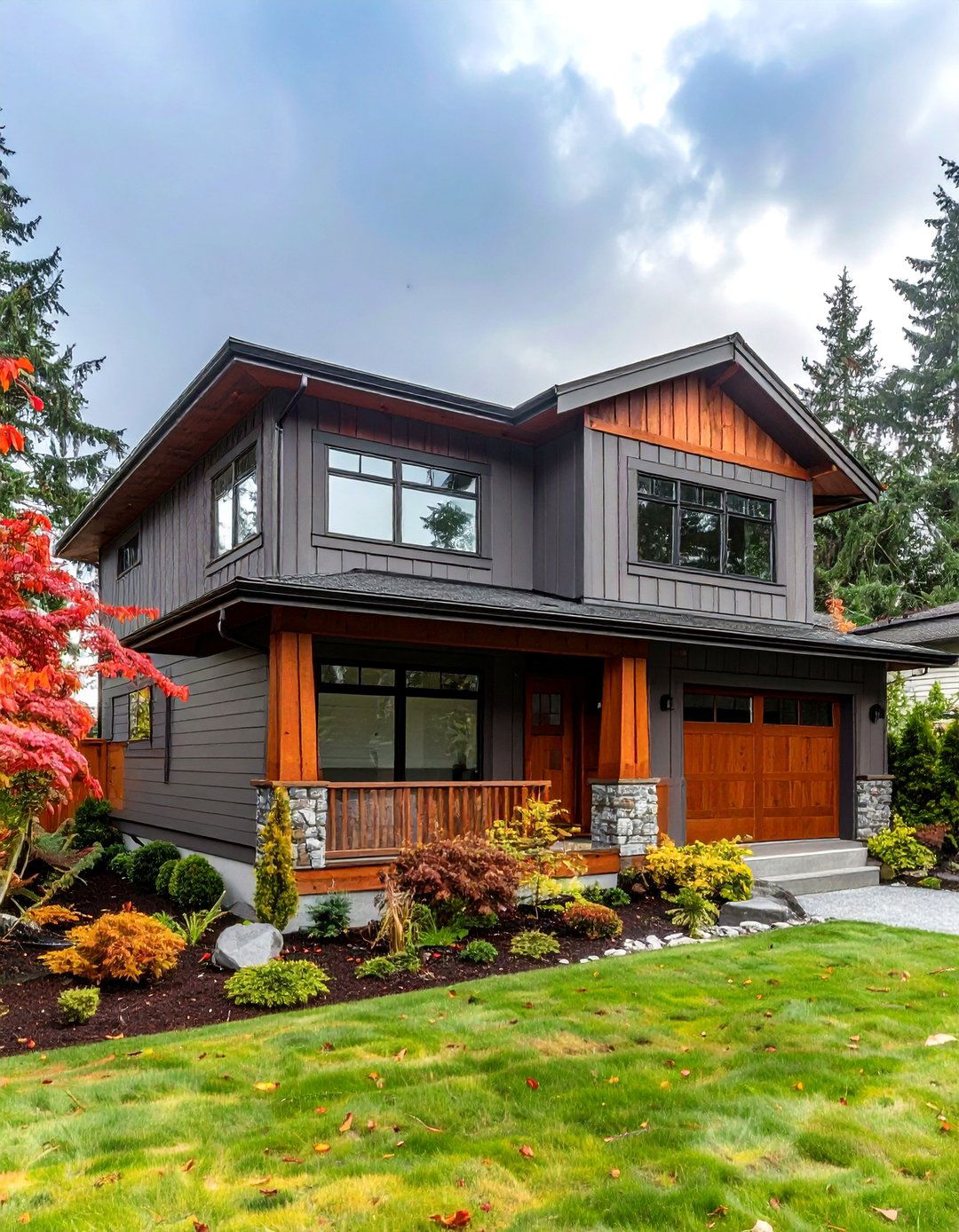
What creates instant warmth against a cool gray exterior? Natural cedar soffits, chunky timber brackets, or even a slim band of redwood rain-screen. HGTV stylists point out that wood grain introduces orange and brown notes, which sit opposite blue-gray on the color wheel, making each element pop without feeling garish. To keep maintenance light, specify wood species with high natural oils or finish boards in a breathable stain that can weather gracefully to silver, echoing the surrounding paint. Because sunlight shifts hue perception, try positioning sample boards under both eave shade and full afternoon glare; the gray paint will appear cooler beside freshly sanded boards than next to weather-grayed planks.
7. Two-Tone Gray Exterior Ombre Siding Effect

By graduating from a lighter gray up top to a mid-tone at ground level, you create an ombre exterior that elongates the elevation and distracts from asymmetrical window placement. Houzz photos show board-and-batten upper stories painted in pale gray hovering above darker horizontal lap siding, linking Victorian proportions with contemporary color blocking. Keep the two shades within the same undertone family—either both warm or both cool—so the shift feels intentional rather than like a mismatched touch-up. Finish with a single white trim color carried across both zones; the common outline knits the gradient together and simplifies future repainting during scheduled maintenance.
8. Gray Exterior Base with Bold Red Door Pop
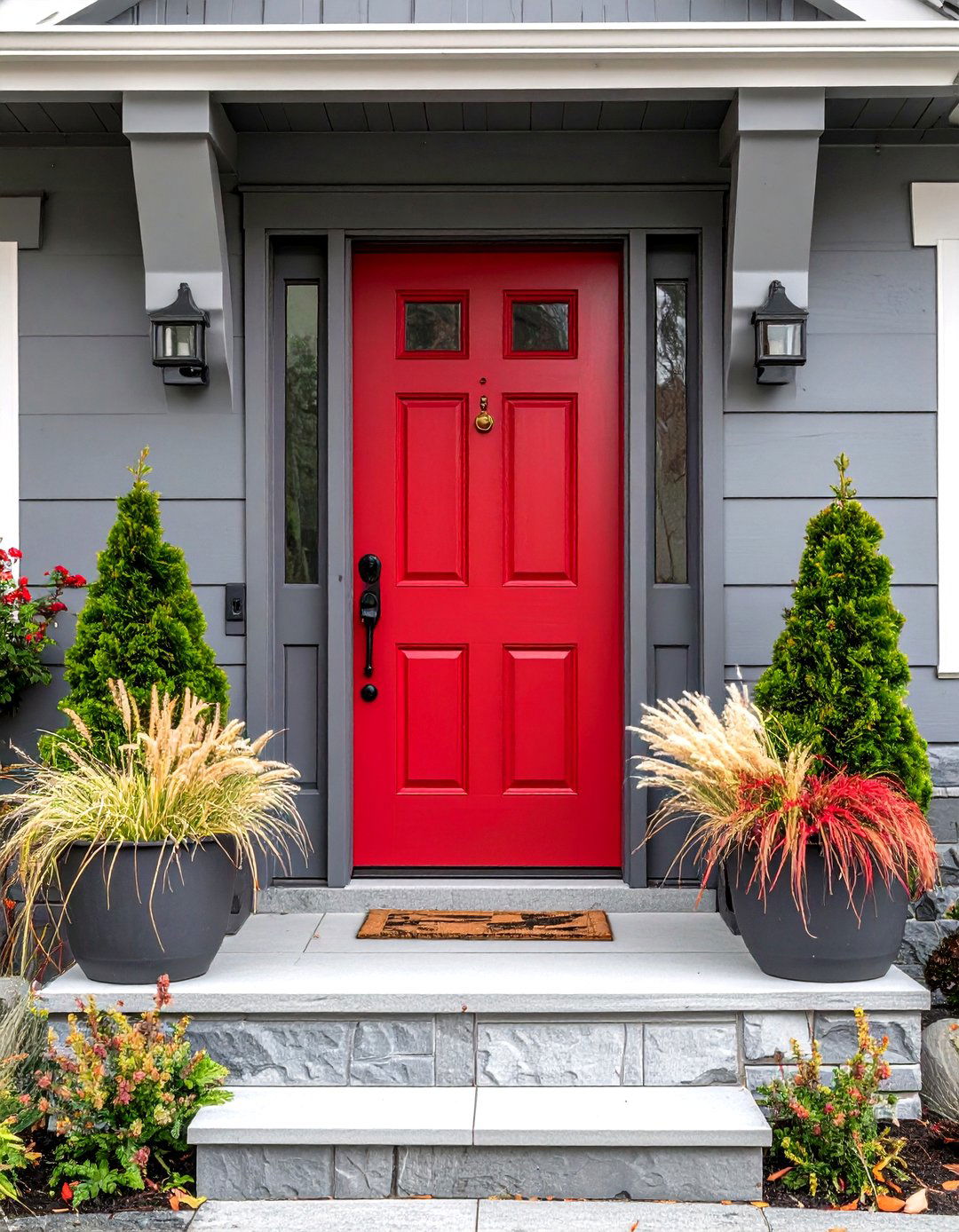
According to color strategists, one of the fastest curb-appeal boosts is pairing a neutral gray exterior with a surprisingly saturated front door, and red remains a perennial favorite because it activates the eye like a welcome flag. Mid-value grays such as Benjamin Moore Stonington Gray act as quiet backdrops, allowing a glossy scarlet or brick red to shine without looking circus-bright. If you fear the combination looks too patriotic, dilute the palette by adding potted grasses and charcoal hardware; the natural texture softens the palette and keeps the entrance grounded. Remember to choose an exterior-grade paint rated for high UV exposure on the door—red pigments fade fastest, and a high-gloss enamel sheds rain better than matte finishes.
9. Earthy Gray Heron Exterior Blending with Nature

Soaring up the 2025 trend charts, Gray Heron is a muted, stone-washed gray whose subtle green undertone helps a house merge into wooded or hillside plots. Because it leans earthier than typical cool grays, it pairs beautifully with cream trim, weathered bronze lanterns, and slate-colored roofing shingles. Landscape designers note that planting chartreuse groundcovers or eucalyptus-toned succulents near the foundation echoes the hue’s minor green cast, making the entire property feel intentional. If your lot receives intense afternoon sun, consider a satin sheen rather than flat; the slight reflectivity will keep the gray exterior from absorbing too much heat while still looking organic.
10. Almost-Black Graphite Gray Exterior for Statement Style

When you want the depth of black without the maintenance headaches of true carbon pigments, Benjamin Moore Graphite delivers a shadow-rich gray exterior that reads like cast iron under cloudy skies. With an LRV near six, it absorbs glare, accentuates crisp window mulling, and hides imperfections in older siding. Brick & Batten colorists recommend introducing warm wood doors or brass hardware to break up the mass and to provide a reflective counterpoint at night. Because deeper colors show roller stripes, ask your painter to back-roll sprayed coats and maintain a wet edge, especially on wide lap boards. Set uplights one meter from the wall; raking beams animate the charcoal planes and prevent the home from disappearing after sunset.
11. Midtone Farmhouse Gray Exterior Board-and-Batten Charm
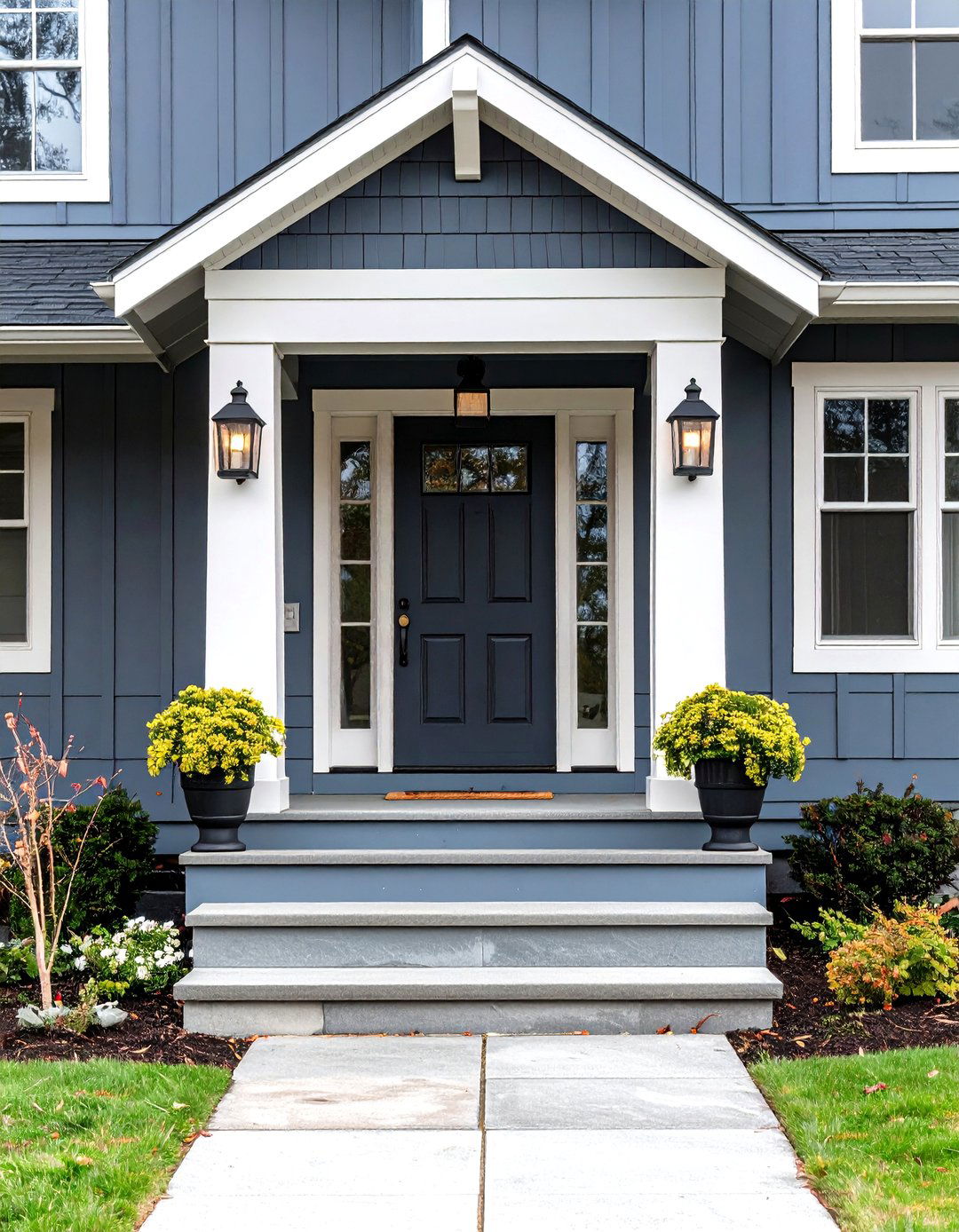
From modern farmhouses in Texas to renovated barns in Vermont, a medium gray board-and-batten façade has become the unofficial uniform of rural chic. Houzz galleries reveal that shades like SW Dovetail or BM Plymouth Rock sit comfortably against standing-seam metal roofs and tobacco-stained porch columns. Southern Living editors recommend balancing the neutral with oversized lantern sconces and generous front steps so the home feels welcoming rather than utilitarian. If your farmhouse has masonry foundations, carry the paint color over the parging; a continuous gray exterior cuts visual clutter and emphasizes vertical rhythm. Consider brushing whitewash onto exposed rafters to highlight craftsmanship without breaking the palette.
12. Gray Exterior with Stone Veneer Texture Pairing
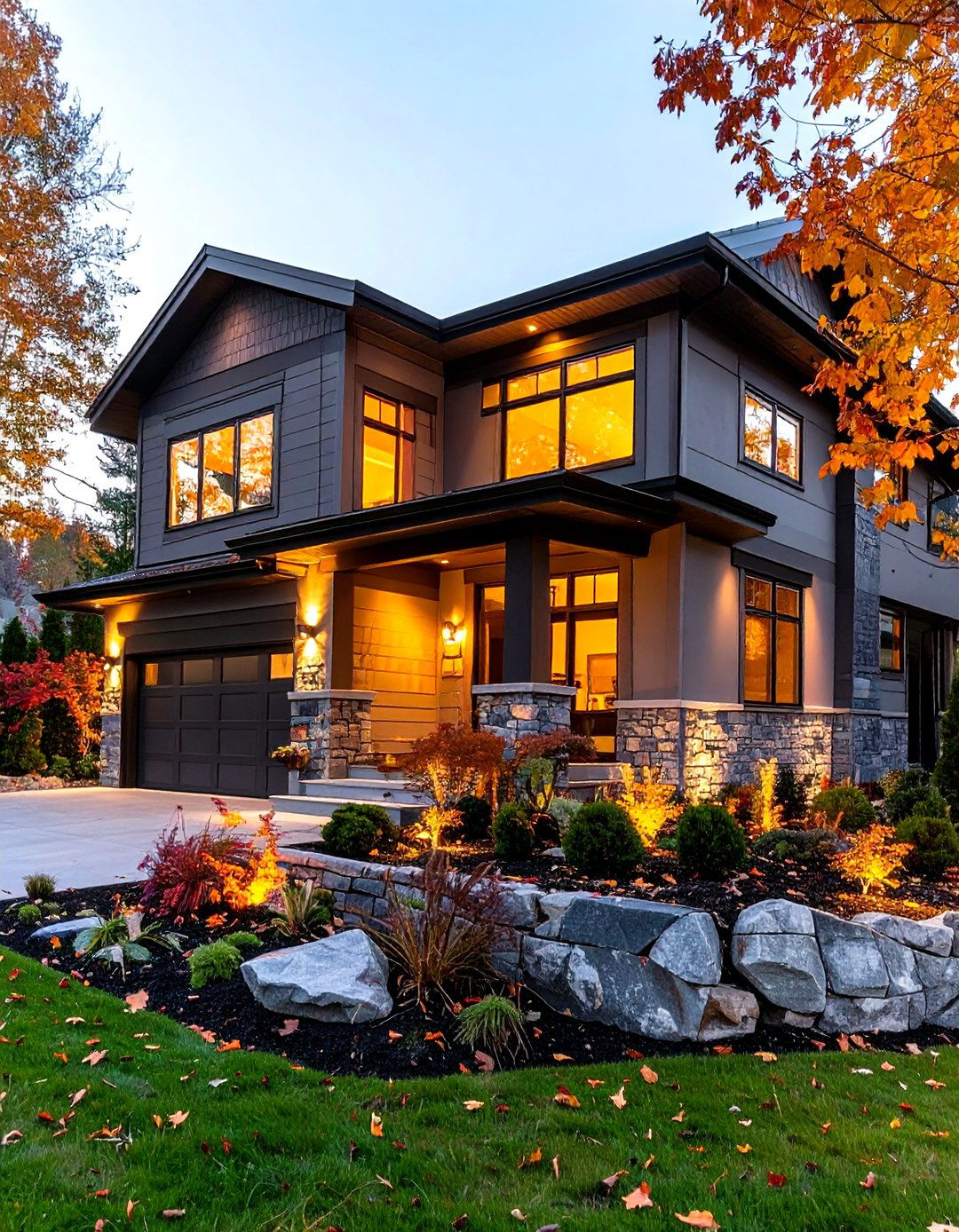
Certainly, few combinations look more rooted than a smooth painted gray exterior crowned by a stone-veneer wainscot wrapping the foundation. Homebuilding & Renovating’s cladding guide notes that mixing materials not only adds depth but also helps break up tall walls on two-story builds. Choose a paint color that matches the lightest mortar streak in your veneer; this trick makes the transition appear intentional rather than a budget compromise. Finish the look with charcoal fascia boards and bronze downspouts—dark metallic elements echo flecks embedded in many manufactured stones. Add warm LED wall washers to showcase the varied textures after dusk beautifully.
13. Gray Exterior Paired with Warm Brown Garage Doors
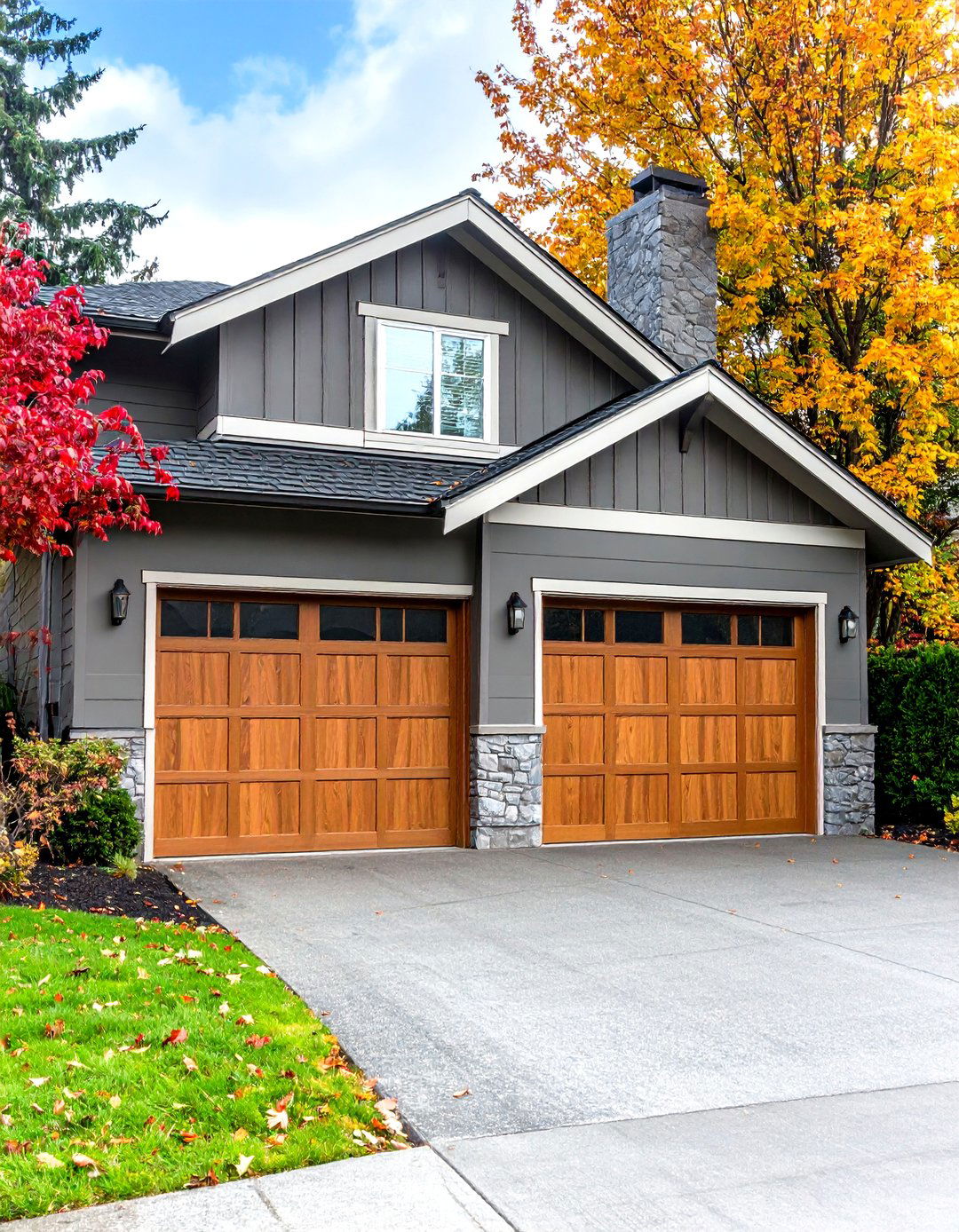
An often overlooked gray exterior opportunity sits right in the driveway: swapping factory-white garage doors for stained-wood or faux-wood options instantly elevates suburban façades. This Old House experts explain that reddish brown cedar brings warmth to cool mid-tone grays by repeating hues found naturally in soil and mulch. For the most seamless match, use the same gray on trim around the overhead doors so the wooden panels read like furniture set into the wall rather than separate parts. To keep upkeep reasonable, select insulated steel doors with factory-baked woodgrain coatings; they resist warping and need only a rinse rather than seasonal refinishing.
14. Pewter Gray Exterior with Sleek Metal Roofing
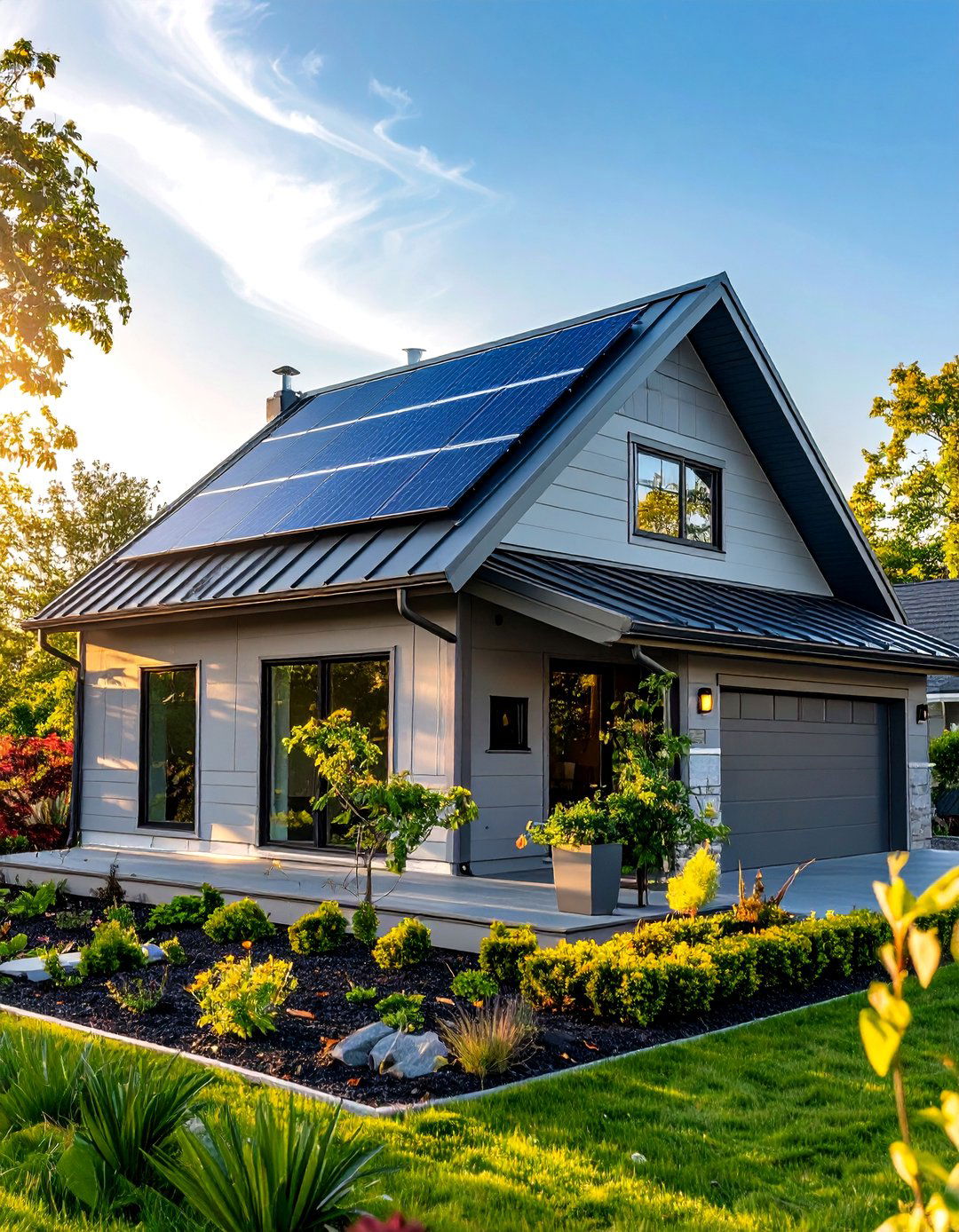
Studies show that pairing a medium pewter gray exterior with charcoal standing-seam metal roofing can boost energy efficiency by reflecting heat away while giving the home a crisply contemporary line. Because both elements share cool undertones, there’s no risk of the roof overpowering the walls; instead, the subtle value difference highlights fascia details and snow guards. Architectural Digest features note that homeowners often add slim solar panels along the roof’s rib valleys—the dark glass nearly disappears against deep gray metal. Finish the minimalist look by selecting a low-profile gutter in the same baked-enamel color as the roof to avoid visual clutter.
15. Light Gray Exterior and Pure White Layered Look

Owing to their high contrast, crisp white accents can make a light gray exterior look almost photo-edited in real life, and that clarity is exactly why photographers love shooting houses painted in SW Passive or BM Classic Gray. Sherwin-Williams even recommends pairing Repose Gray with Eider White on trim for a gentle edge that still registers from the street. To avoid a stark banding effect, painters suggest limiting the pure white to fascia, window sashes, and railings, while employing a 50-percent tint of the field color on porch ceilings and vent grilles. Layering whites in this way softens transitions and ensures seasonal decorations—wreaths, pumpkins, lanterns—stand out without making the house itself recede.
16. Gray Exterior Facade with Contrasting Shutter Accents
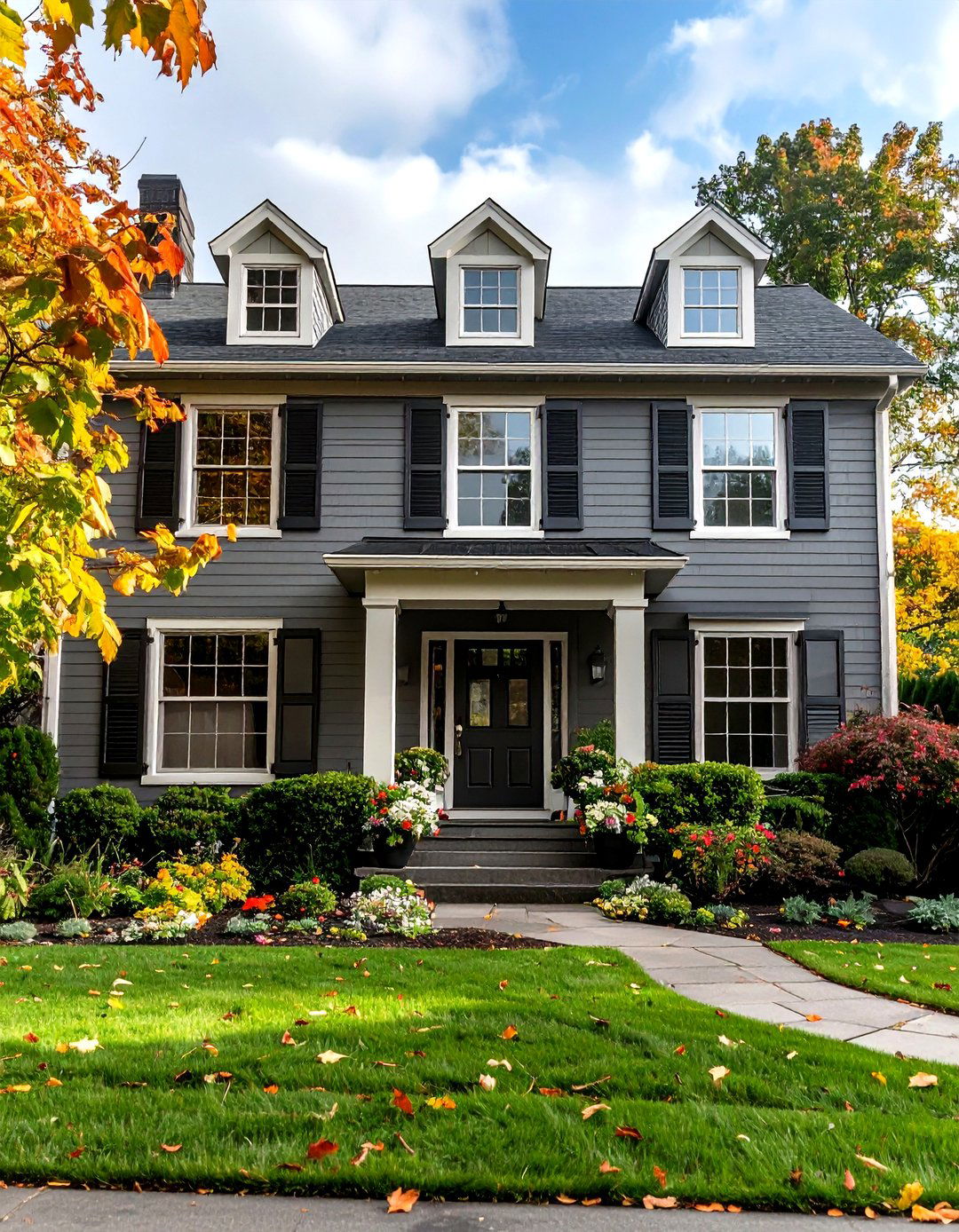
BHG’s color editors insist that few upgrades feel as personal as painting shutters a shade or two darker—or brighter—than the gray exterior field. Popular picks include graphite-tinged navy, dusty olive, or, in historic districts, a heritage eggplant—all of which add dimension without overwhelming the siding. When selecting shutter paints, match the sheen (usually satin) to that on the main body so reflections stay consistent. Attach stainless steel shutter dogs and hinges; small metallic glints underline color variation and offer long-term rust resistance. If you live in a windy zone, choose operable hardware so shutters can protect windows during storms, echoing their original function.
17. Minimalist Gray Exterior Box with Dramatic Shadow Lines
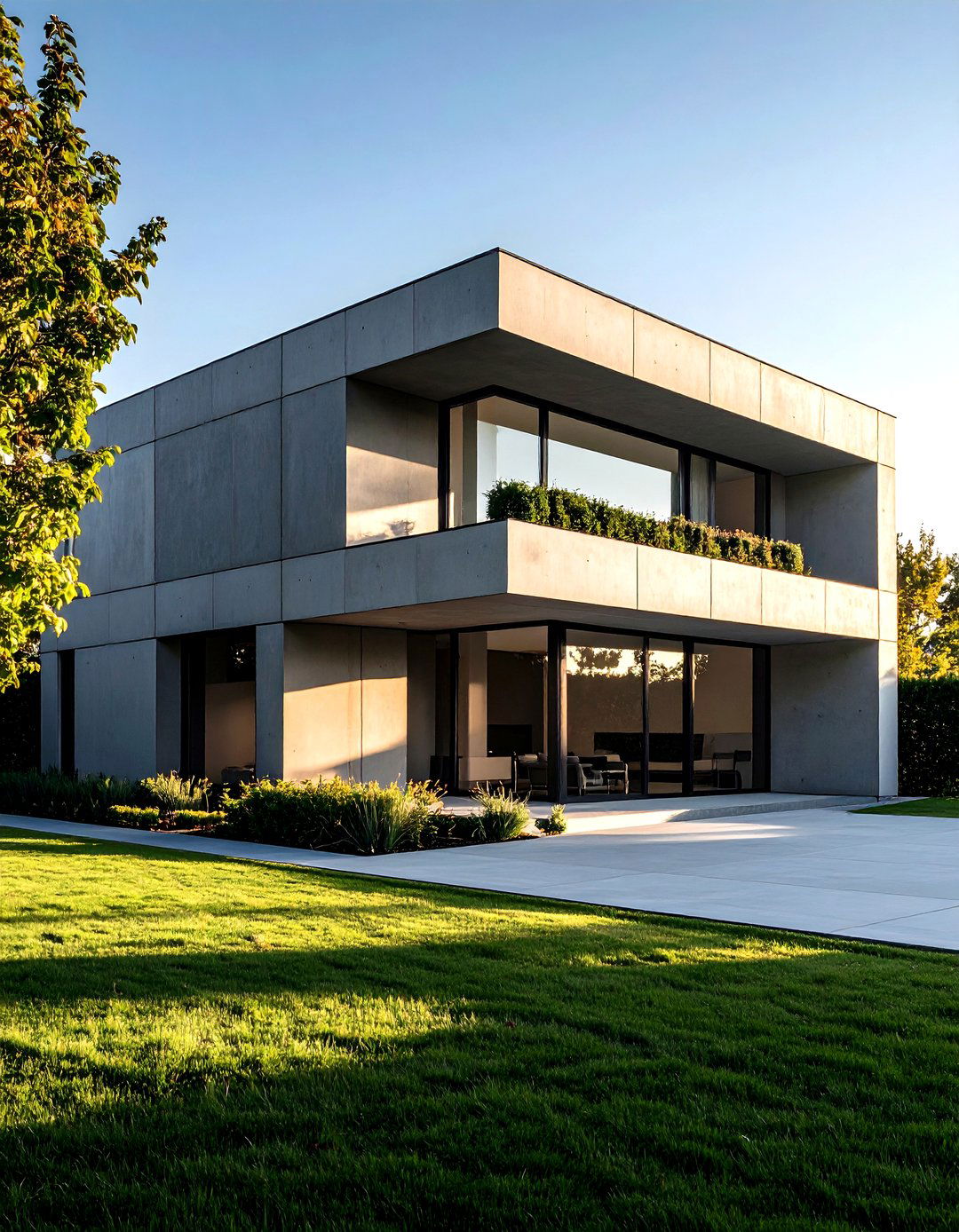
Modern cube-style houses often depend on form rather than ornament, so a single mid-dark gray exterior—applied in a uniform satin sheen—allows the massing and shadow gaps to become the star. Architects recommend ⅝-inch reveals at panel joints to cast crisp lines that shift throughout the day, animating what could be a flat plane. Because such minimal palettes magnify surface flaws, invest in smooth fiber-cement panels or high-grade troweled stucco, and specify a robust acrylic latex rated for 20-year colorfast performance. Keep accessories equally restrained: recessed channel lighting, flush garage doors, and slim house numbers in brushed stainless create a museum-like calm.
18. Gray Exterior Complemented by Lush Greenery

Garden designers remind us that gray is a natural foil for plants—the cooler the gray exterior, the more vibrant emerald foliage looks against it. The Southern Living guide to greige suggests edging walkways with glossy boxwood or rosemary, which bounce warm green reflections onto nearby siding and soften hard lines. On larger lots, consider planting burgundy Japanese maples; their red undertone harmonizes with iron-rich soil and adds depth to quiet gray planes. Install drip irrigation close to foundations to prevent splash marks that can mar lighter gray paints; mulch beds with dark bark to ground the scheme visually.
19. Evening Gray Exterior Enhanced by Warm Lighting
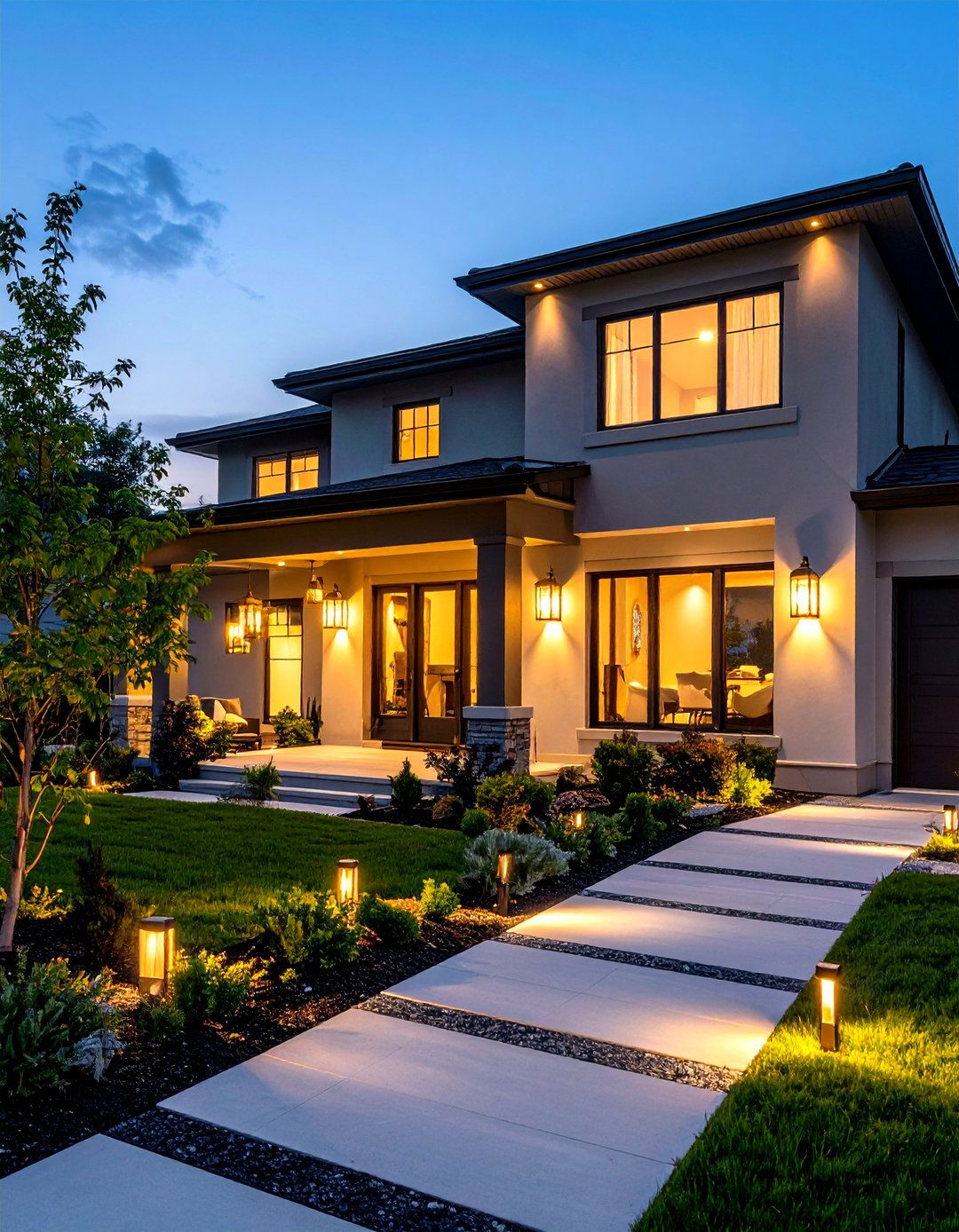
After sunset, even the best gray exterior risks flattening into darkness unless you compose a thoughtful lighting plan. HGTV showcases feature low-voltage LED uplights tucked among shrubs to graze walls, pendant porch lanterns in aged brass for sparkle, and billiard-ball-sized step lights to outline paths. The warm 2700-kelvin color temperature counteracts cool gray undertones, making paint appear richer and more inviting. Use a smart transformer with astronomical timer so lights come on automatically at dusk and fade after midnight, conserving energy while safeguarding curb appeal. Position fixtures at one-third the wall height for balanced illumination and minimal glare.
20. Multi-Material Gray Exterior Cladding for Depth
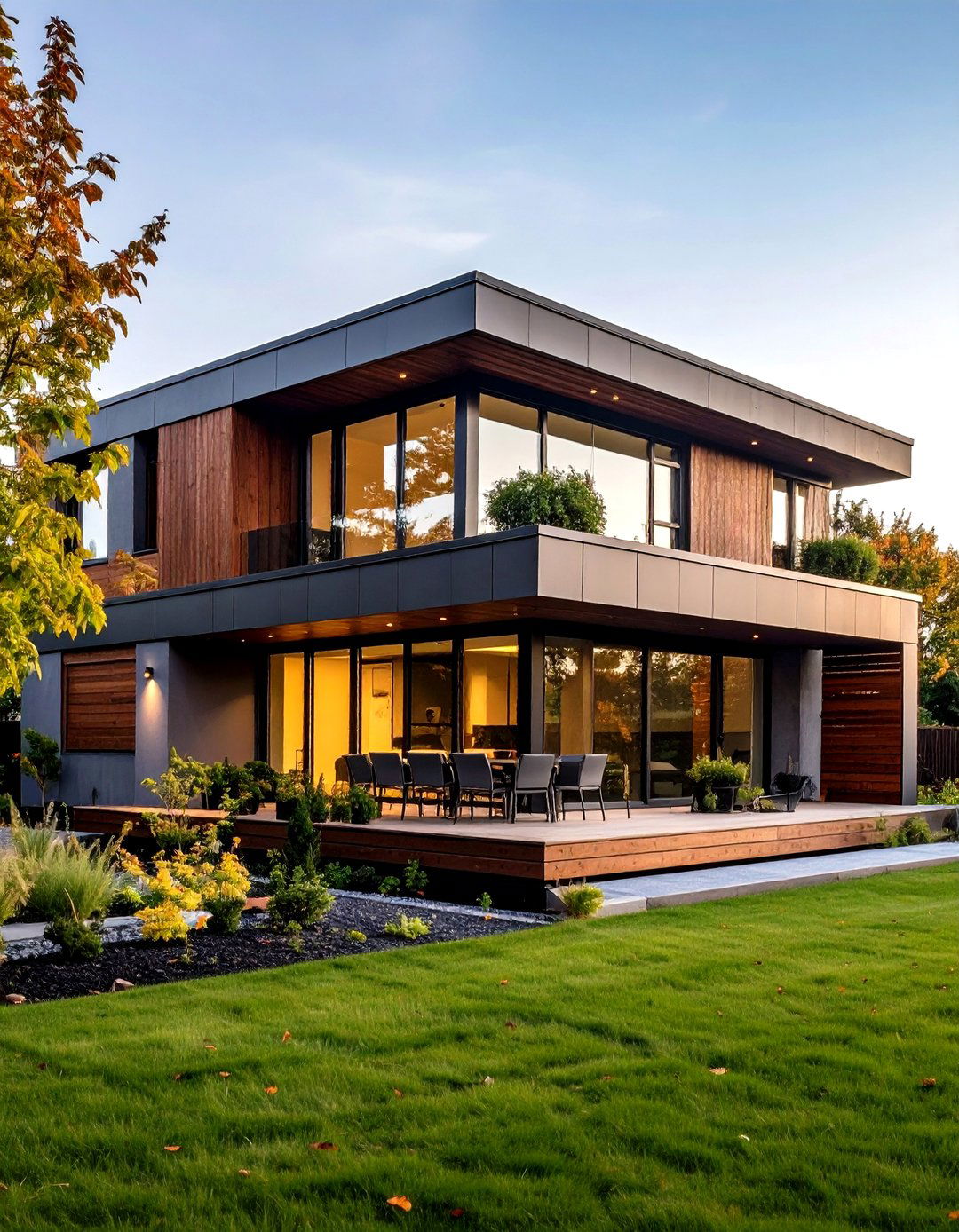
These days, the most memorable gray exteriors often aren’t one material at all—they’re a curated collage of fiber-cement panels, vertical timber slats, and corrugated metal painted in tonal variations of the same hue. Homebuilding & Renovating emphasizes that mixing cladding adds insulation value and future-proofs repairs; damaged sections can be swapped without repainting the whole façade. Keep the palette coherent by selecting grays within a single color strip and varying only texture and gloss, not undertone. Finally, run the primary field color onto any backyard garden sheds so the eye reads one continuous architectural story from street to rear patio.
Conclusion:
Gray may be a single color family, yet these twenty approaches prove its range rivals the rainbow. By tuning undertone, sheen, material pairings, and accent details, you can craft a gray exterior that feels coastal-light, farmhouse-warm, or modern-moody—and know it will still look elegant ten repaint cycles from now. Test generously, notice how daylight shifts each pigment, and let surrounding materials guide final tweaks; when paint, architecture, and landscape speak the same quiet gray language, curb appeal becomes effortless.


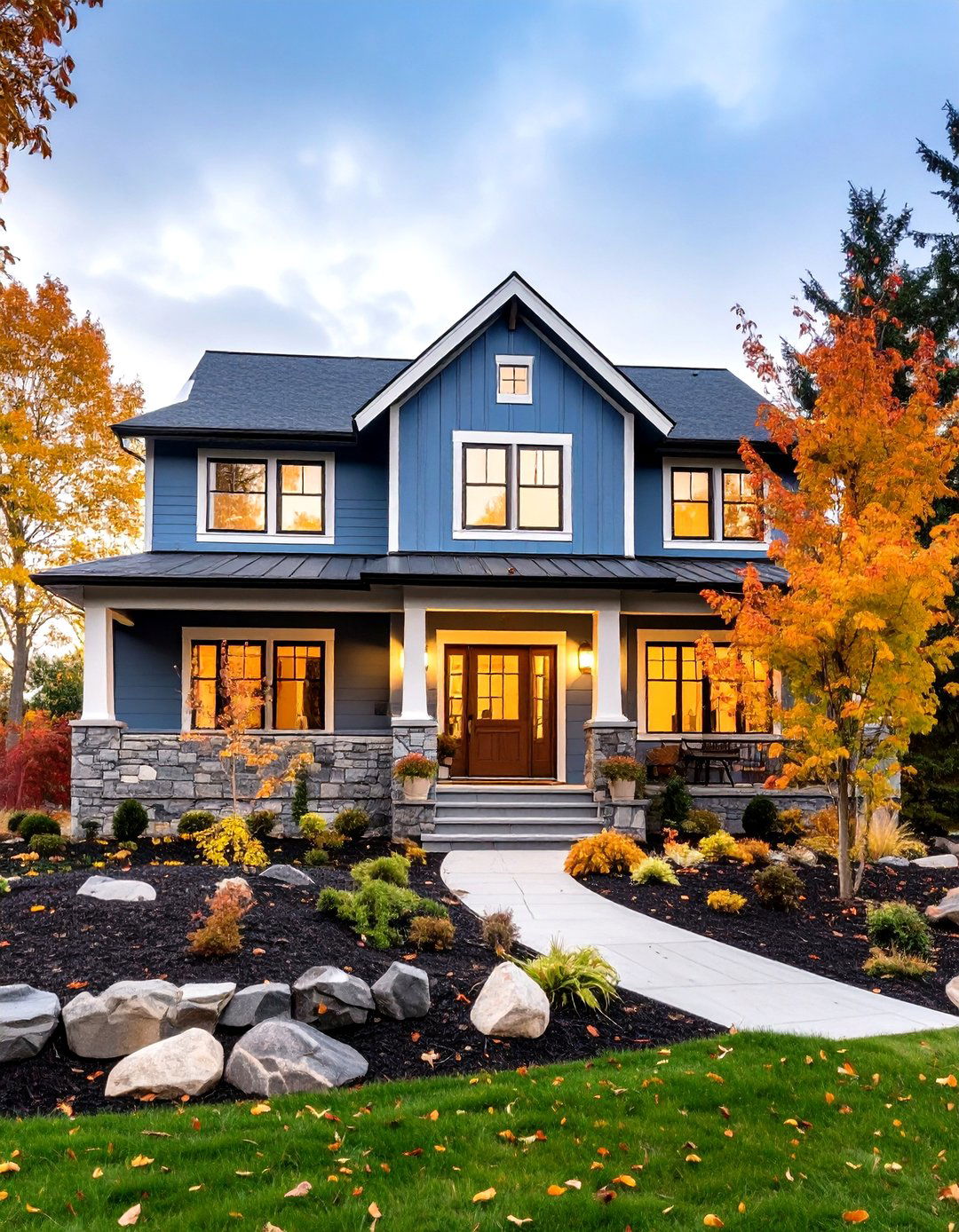
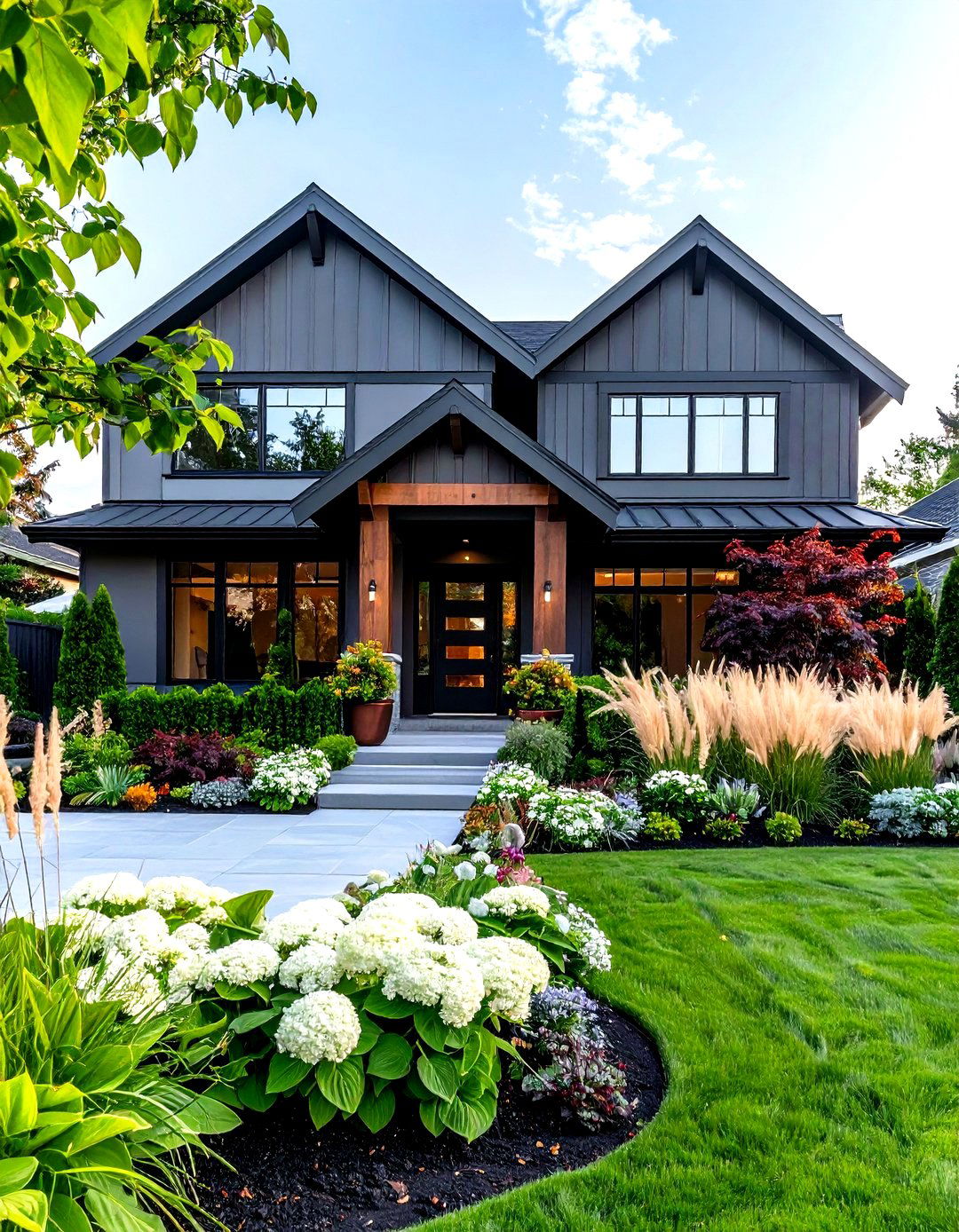

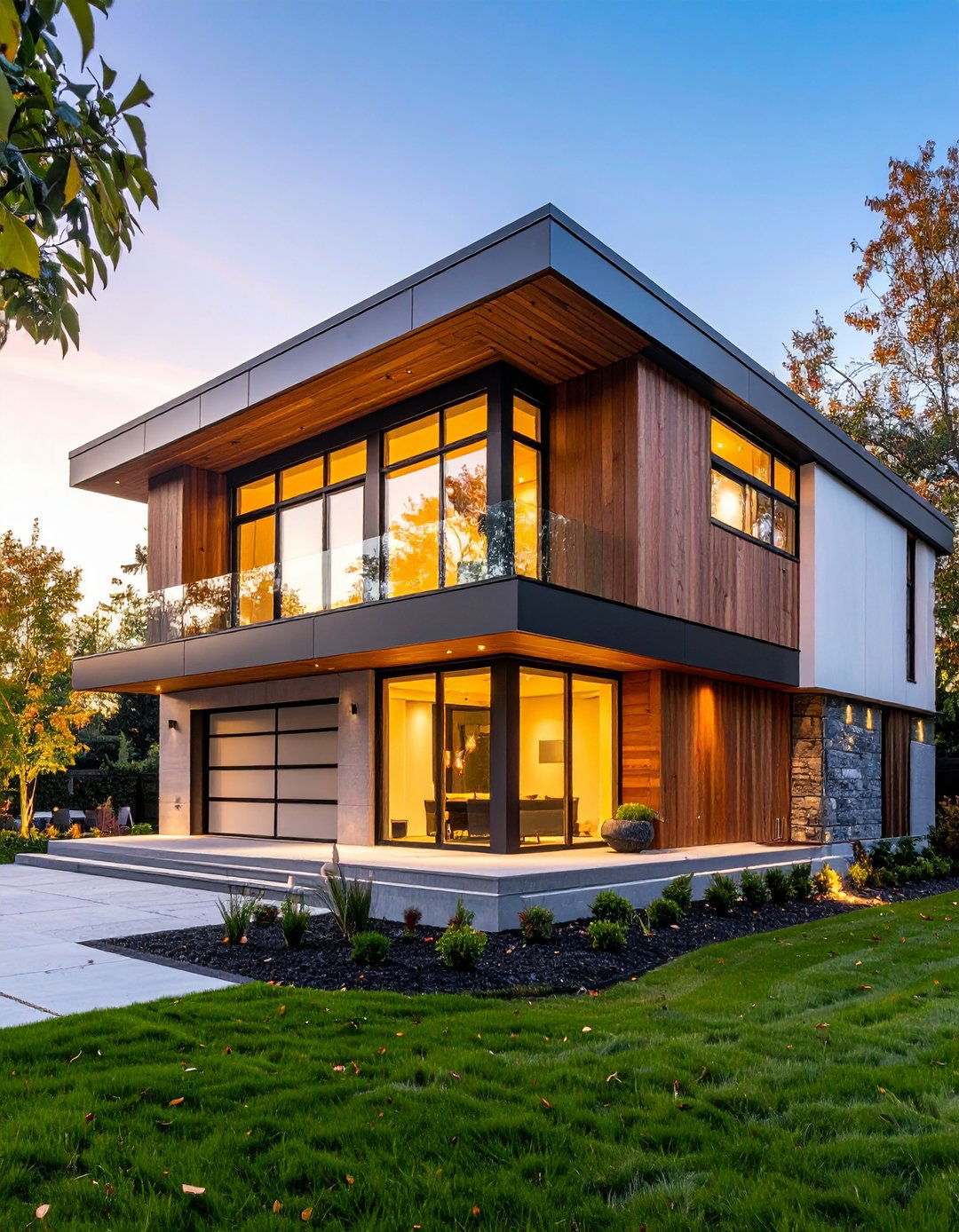
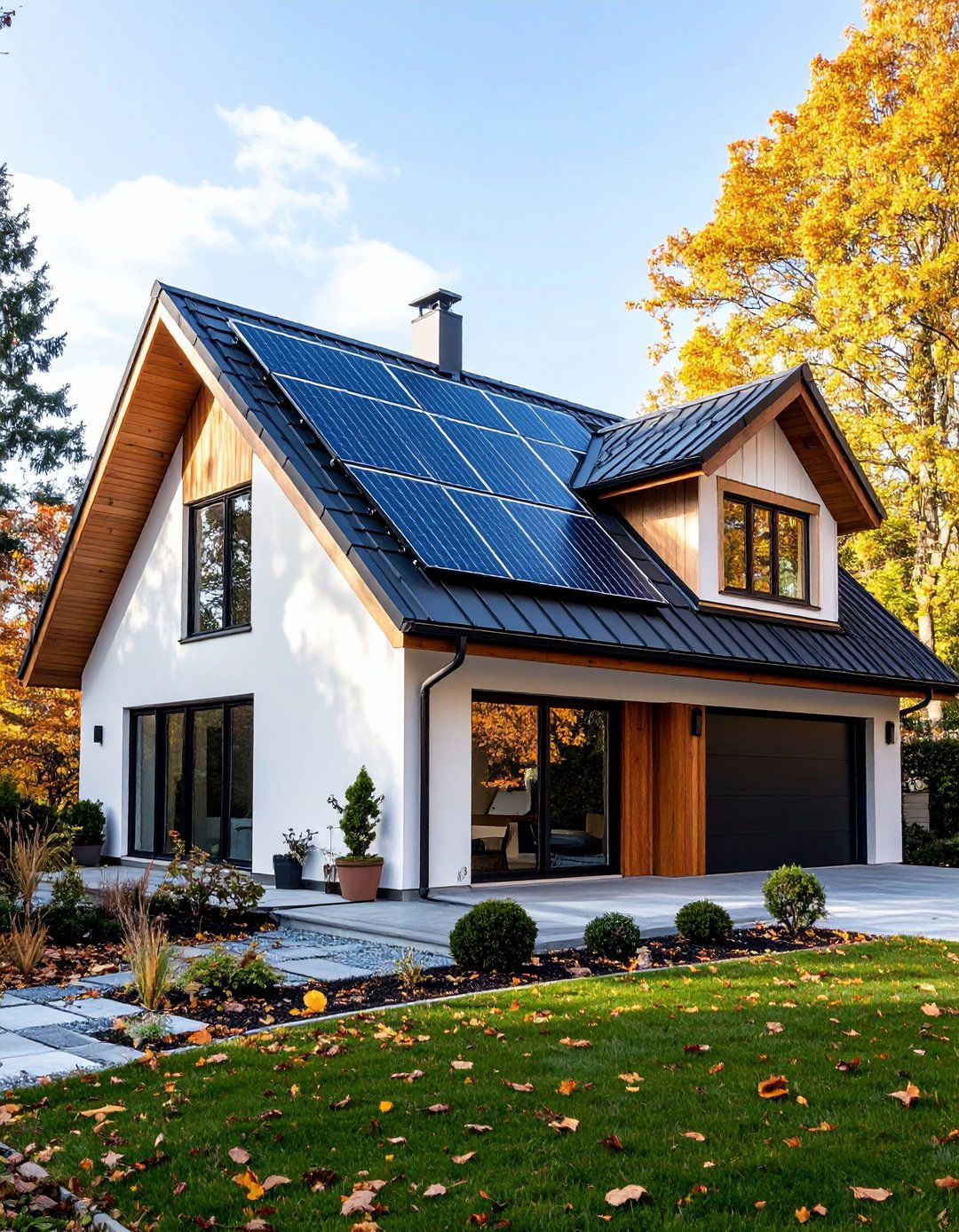
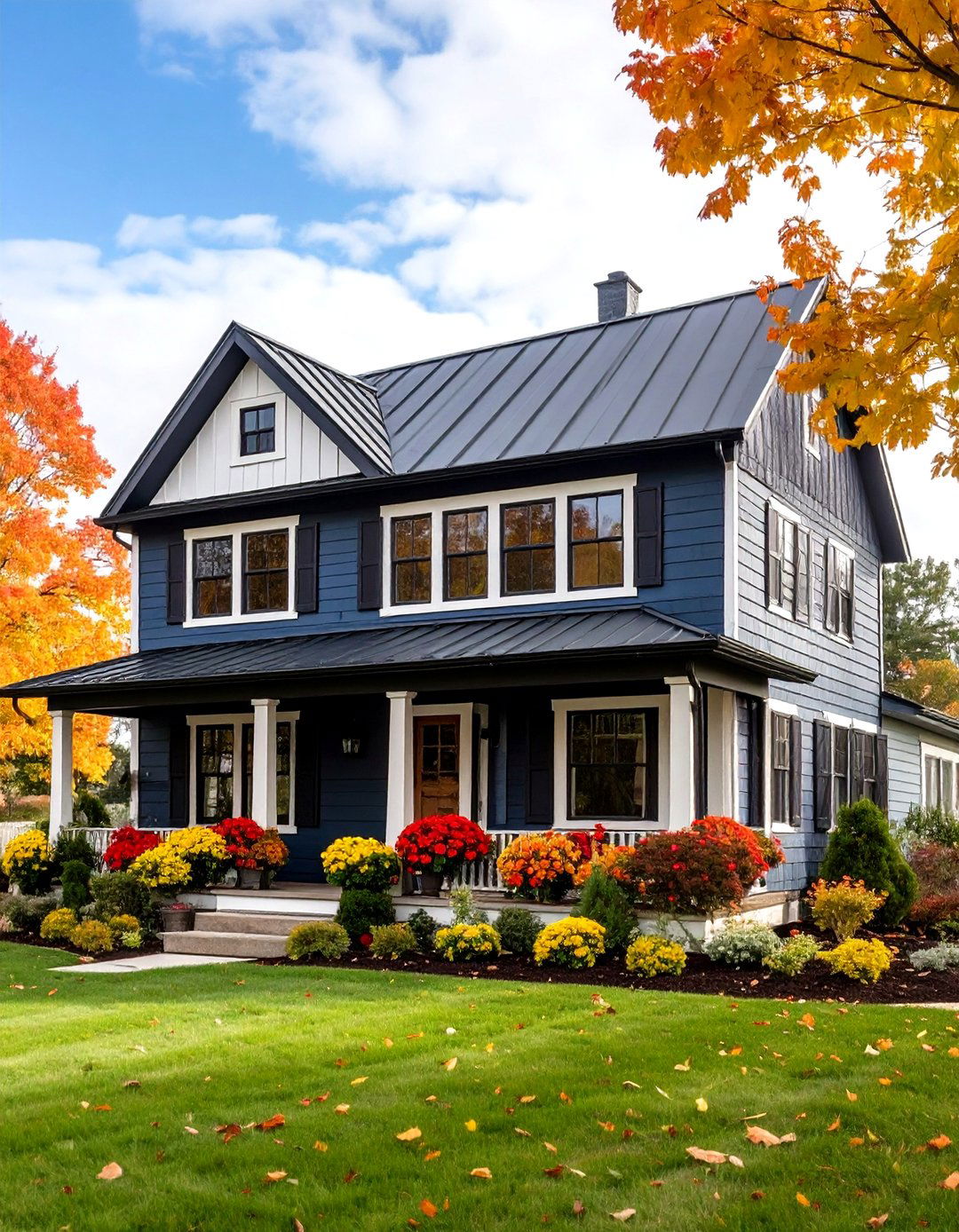

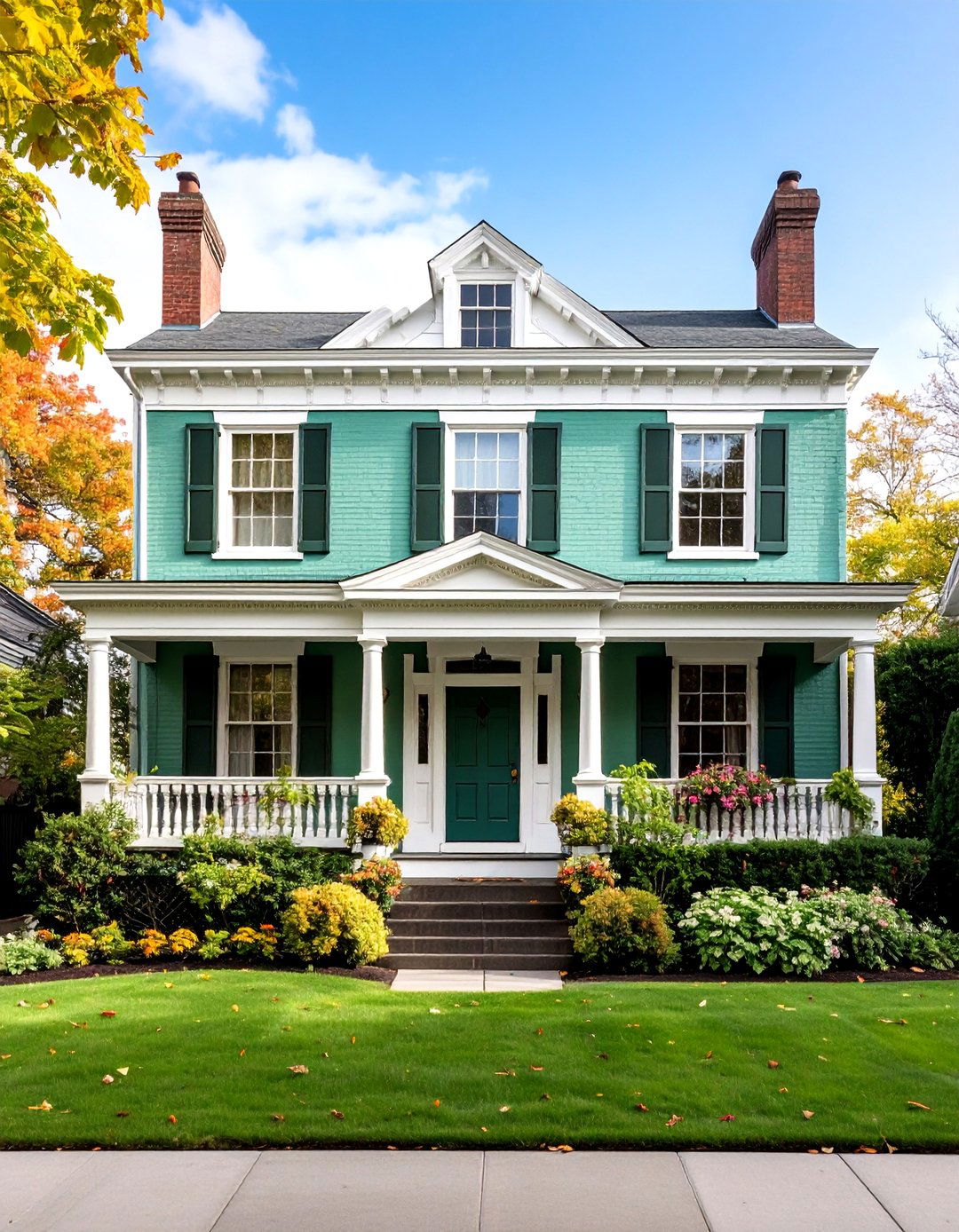
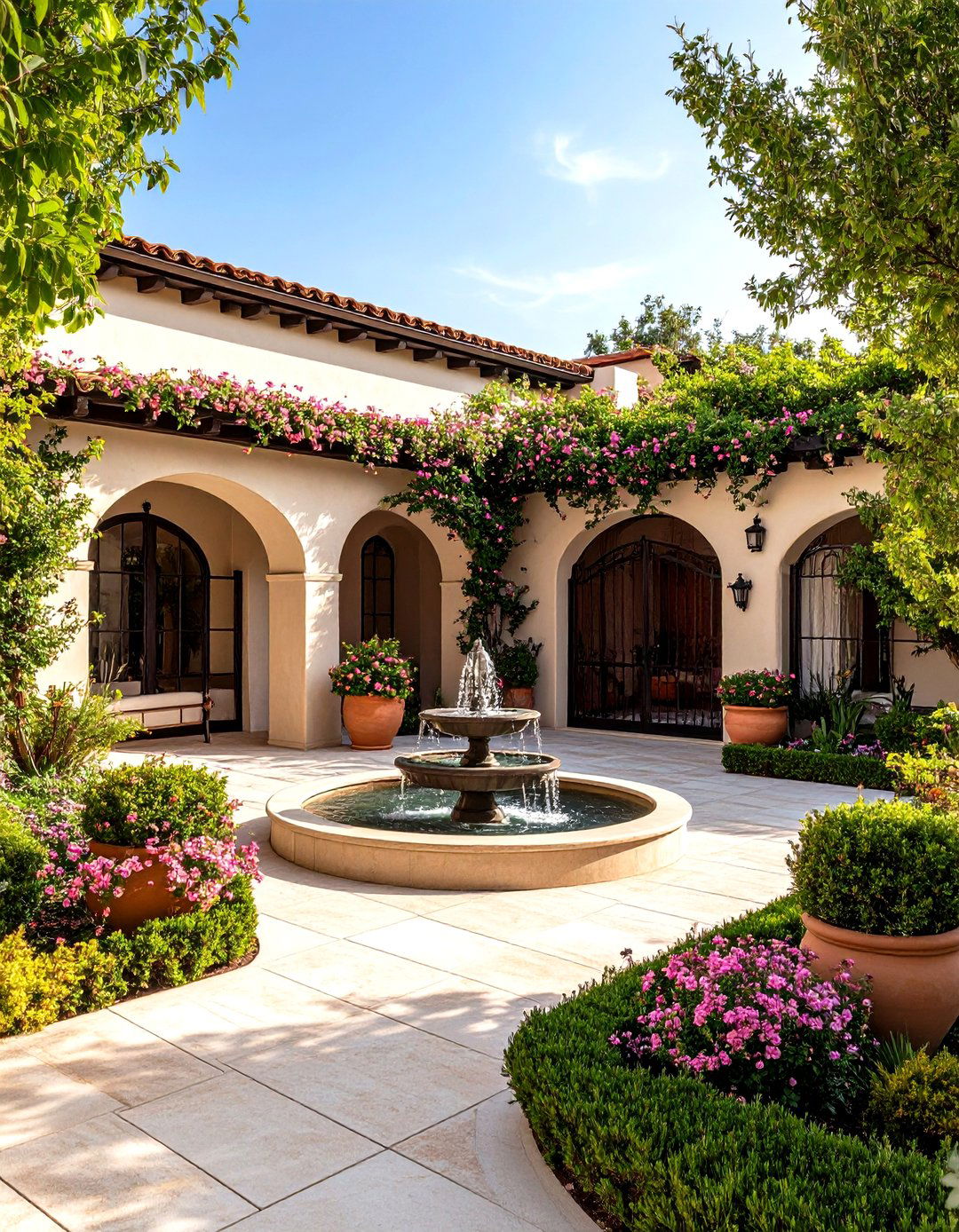

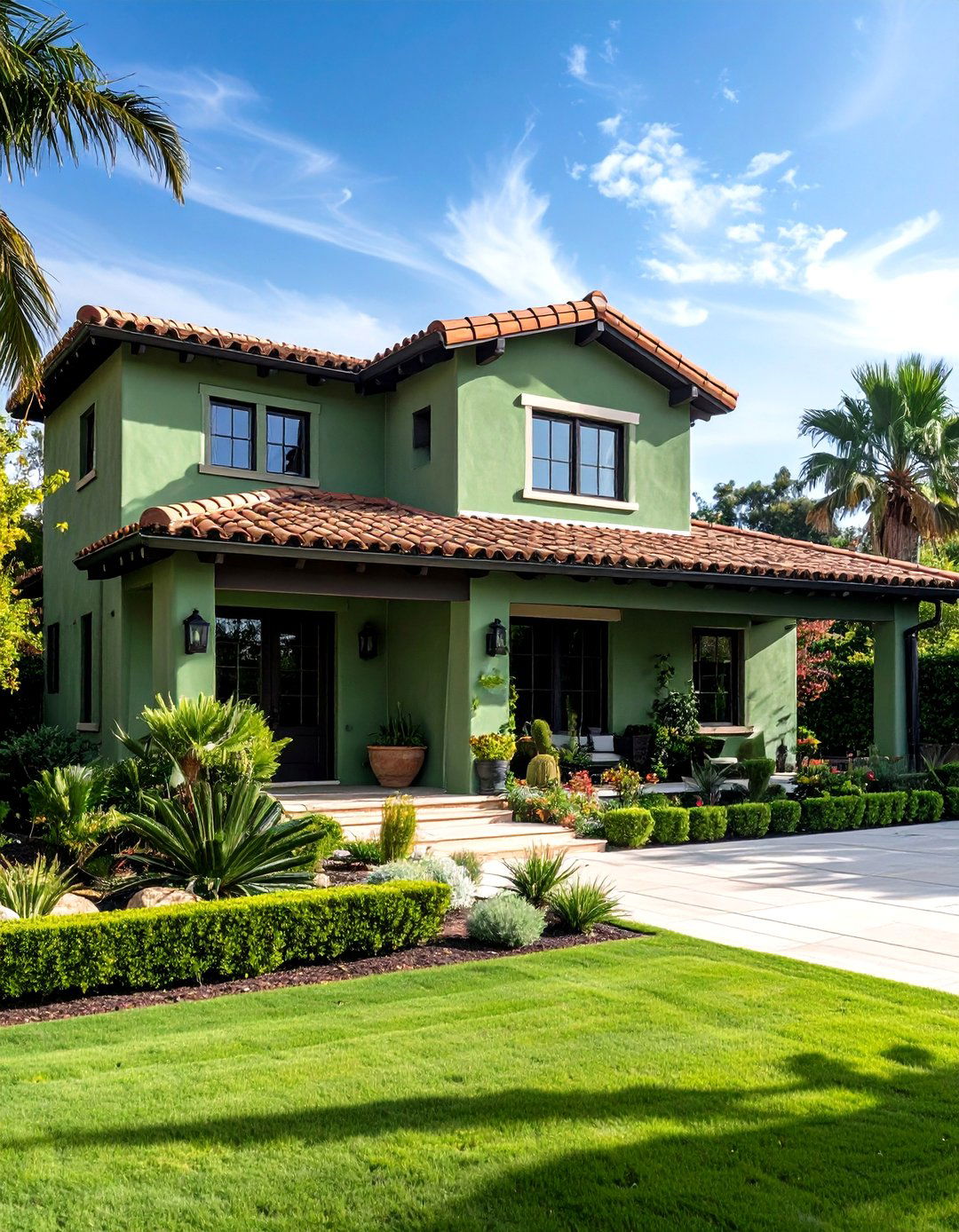
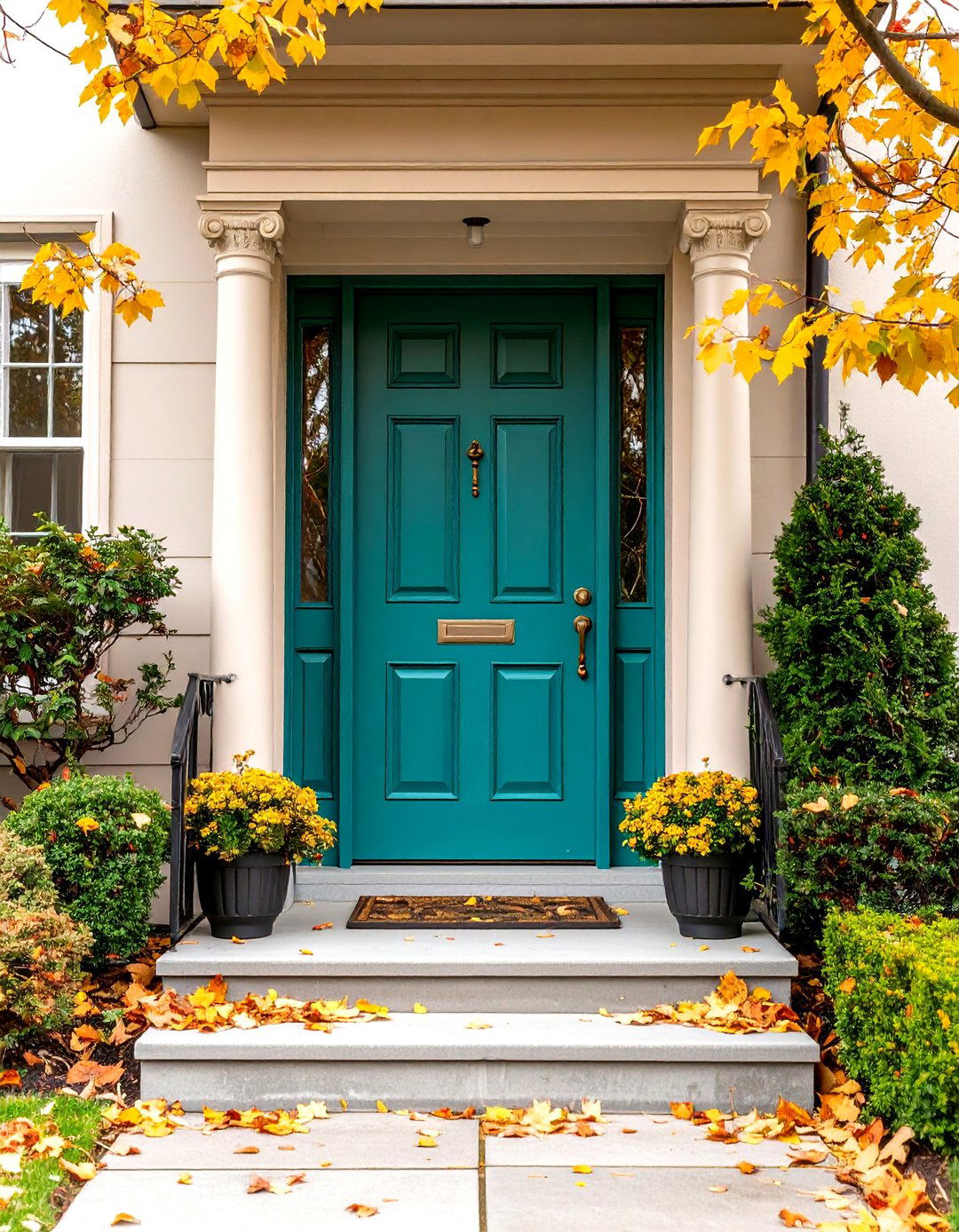

Leave a Reply